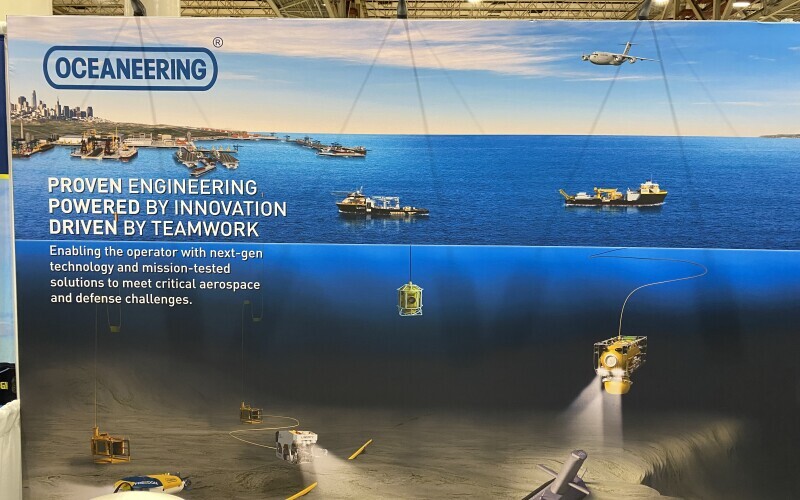Oceaneering International LLC., a subsea technology company, was one of the many exhibitors showcasing its cutting-edge solutions in underwater exploration and safety at last year’s Underwater Intervention (UI), part of the International WorkBoat Show (IWBS) held in New Orleans, La.
Oceaneering’s work covers a wide swath of use cases and industries, though a large portion of the work is with the oil and gas industry, along with Department of Defense work.
John Zimmerman, director of business development at Oceaneering, took part in a UI panel discussion.
“Basically, if it’s subsea and it’s complex, Oceaneering is probably doing it," he said. "Our motto is: 'We solve the unsolvable.'”
In that panel, Zimmerman focused on two of Oceaneering's products, its E-ROV (remote operated vehicle) Liberty, and AUV (autonomous underwater vehicle) Freedom. Regarding Liberty, Oceaneering is looking to solve one of the most expensive problems for subsea operations: stationing ships above an ROV. Liberty deploys a communication antenna and communicates with an on-shore center.
The Freedom, meanwhile, is the company's newest development, with only one in the world right now. According to Zimmerman, this is the first AUV to do autonomous subsea charging and data offload.
In February, the company announced that its Aerospace and Defense Technologies (ADTech) business segment has been awarded a contract by the Defense Innovation Unit (DIU), a U.S. Department of Defense organization, for the development and testing of the Freedom Autonomous Underwater Vehicle (AUV) as a potential Large Displacement Unmanned Undersea Vehicle (LDUUV) prototype for the U.S. Navy’s Program Office for Advanced Undersea Systems.
Oceaneering is also involved in various projects like its collaboration with researchers at the University of Houston and Chevron. The companies are creating an autonomous robot to detect potential pipeline leaks and structural failures during subsea inspections, in response to an increasing number of severe accidents in the global oil and gas industry caused by damaged pipelines. The aim of this technology is to make the inspection process safer and more cost-effective, while also protecting subsea environments from potential disasters.




